Ursula Strohriegel
Fine-grained linguistic evaluation for state-of-the-art Machine Translation
Oct 14, 2020
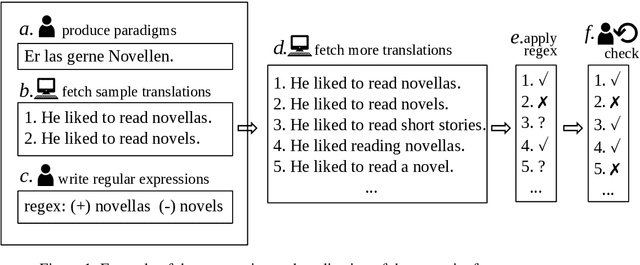
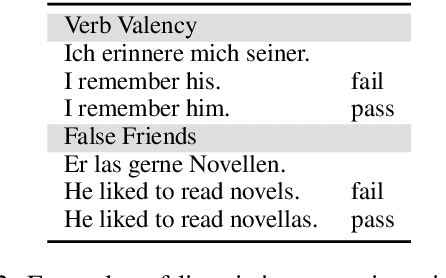
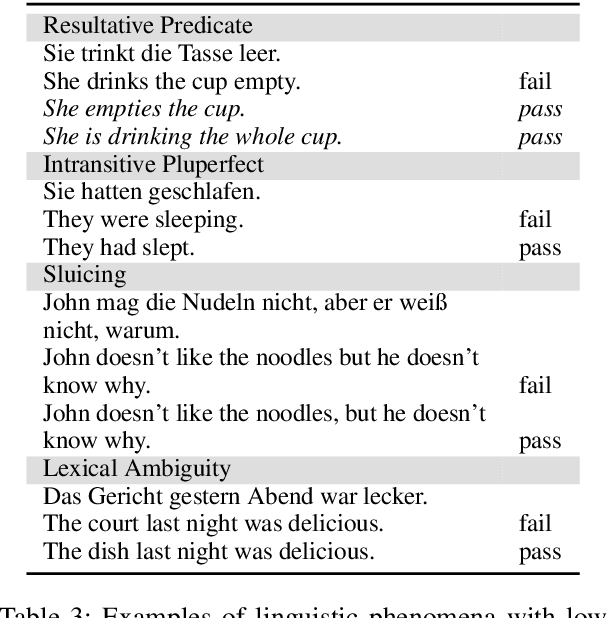
Abstract:This paper describes a test suite submission providing detailed statistics of linguistic performance for the state-of-the-art German-English systems of the Fifth Conference of Machine Translation (WMT20). The analysis covers 107 phenomena organized in 14 categories based on about 5,500 test items, including a manual annotation effort of 45 person hours. Two systems (Tohoku and Huoshan) appear to have significantly better test suite accuracy than the others, although the best system of WMT20 is not significantly better than the one from WMT19 in a macro-average. Additionally, we identify some linguistic phenomena where all systems suffer (such as idioms, resultative predicates and pluperfect), but we are also able to identify particular weaknesses for individual systems (such as quotation marks, lexical ambiguity and sluicing). Most of the systems of WMT19 which submitted new versions this year show improvements.
Linguistic evaluation of German-English Machine Translation using a Test Suite
Oct 16, 2019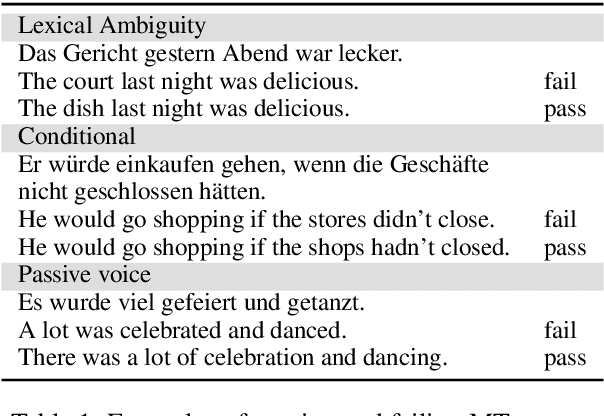

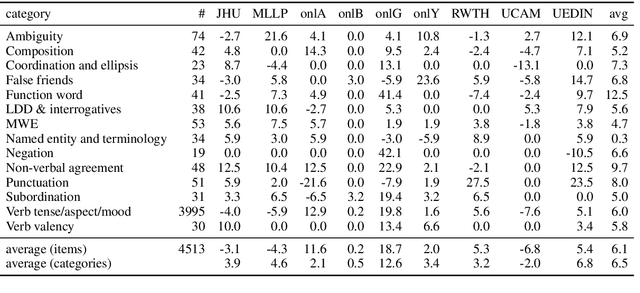
Abstract:We present the results of the application of a grammatical test suite for German$\rightarrow$English MT on the systems submitted at WMT19, with a detailed analysis for 107 phenomena organized in 14 categories. The systems still translate wrong one out of four test items in average. Low performance is indicated for idioms, modals, pseudo-clefts, multi-word expressions and verb valency. When compared to last year, there has been a improvement of function words, non-verbal agreement and punctuation. More detailed conclusions about particular systems and phenomena are also presented.
 Add to Chrome
Add to Chrome Add to Firefox
Add to Firefox Add to Edge
Add to Edge